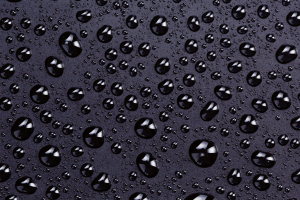Self-assembled monolayers nicely link the history and the future of nanoscience and nanotechnology.
The Kavli Prize in nanoscience, awarded this year to Jacob Sagiv, Ralph Nuzzo, David Allara and George Whitesides for their work on self-assembled monolayer (SAM)1, represents a moment to celebrate the pioneers of our field. It is fun to look back at the motivations and vision of the scientists that have made nanoscience the thriving field that it is now and how their ground-breaking discoveries came about. So, with the caveat that for four people being prized, there’s an army of other researchers that have contributed, this editorial is a mini journal club, in which we have re-read the first papers on SAMs by Sagiv, Nuzzo, Allara and Whitesides.

To the contemporary reader, the most striking feature of those early papers on SAMs is perhaps the ingenuity by which scientists in the early 80s were able to make inferences to the nanoscale world. Far in the future lies the invention of the atomic force microscopy for the accurate determination of the thickness of a monolayer. In his paper showing that n-octadecyltrichlorosilane (OTS) can chemisorb onto SiO2 surfaces upon hydrolysis of the Si–Cl bonds to Si–OH, Sagiv cross-checked the estimated thickness of the monolayer obtained by conductivity measurements using a fluorescent donor–acceptor system co-chemisorbed with OTS2. The donor is directly adsorbed on the surface whereas the acceptor is at a distance of the same length of the OTS molecule. By measuring the fluorescence quenching of the donor, aptly benchmarked to a known Cd-based fluorophore, he could estimate the distance of the acceptor and therefore the thickness of the monolayer. It’s like measuring time without a stopwatch!
It was already quite clear from the beginning that SAMs could be used to modify the properties of surfaces more effectively and controllably than by using polymer coating. The fact that molecules are oriented in an ordered and largely predictable manner was a powerful tool to design oleophilic or hydrophilic surfaces; the quality of which was quantified by contact angle measurements3,4. Orientation of the SAM could be ascertained by dichroic absorption, observing that linearly polarized light incoming from a certain angle would be absorbed more strongly, because it aligns with the electric dipole of the adsorbed molecule.
Vibrational spectroscopy allowed Nuzzo and Allara to understand that the alkyl chain of their organic disulfide compounds is fully extended in a zig-zag conformation out of the Au surface and that the carbonyl group of the polar ester endgroup lies instead more flat with respect to the Au surface4.
Whitesides’s early papers on SAMs always emphasize the simplicity of the technology for surface patterning. Their initial homemade setup reflects this philosophy, as they make clever use of a Staedtler pen filled with hexadecanethiol ink fixed on a micrometre xy stage to draw SAM lines5,6,7. The fact they demonstrated that it was possible to achieve features of ~100 nm, smaller than what was then possible by photolithography, allowed other labs and especially chemistry labs unfamiliar to working in clean room conditions, to experiment with SAMs “for applications such as rapid prototyping of microelectrode arrays and other relatively simple structures”5. Whitesides went on to fabricate organic electronic devices with them8.
While the initial motivation behind the development of SAMs was to improve the Blodgett–Langmuir film fabrication with a technique that would be more versatile and less error prone, with time, a bio-inspired vision of these monolayers also became clear.
It is probably the foundational Review article ‘Self-Assembled Monolayers of Thiolates on Metals as a Form of Nanotechnology’ of 2005 authored among others by both Nuzzo and Whitesides9 that, starting from the lesson learnt from SAMs, set forth a vision that still has profound implications in nanoscience till these days: citing, “SAMs demonstrate that molecular-scale design, synthesis, and organization can generate macroscopic materials properties and functions.” This general concept that self-assembly processes bridge control over length scales, from nano to macro, has its foundation and inspiration in biological structures and it is central in many contemporary lines of research in nanoscience.
During an interview on the occasion of the Kavli prize week, held at the beginning of September in Oslo, Norway, Sagiv, Nuzzo and Whitesides talked about their work on SAMs. The interview is available on YouTube (https://www.youtube.com/watch?v=8jtTRraZg6M). Many nanoscientists would directly relate to the excitement that still exudes from their words and, strikingly, to the interdisciplinary character of the research that has sprouted off the development of SAMs. In particular, it’s a real pleasure to learn that while Sagiv was attracted by the prospect of manipulating molecules one at a time — a paradigm shift from solution chemistry taught in school — Nuzzo related himself to bio-inspired systems and ways in which SAMs can be used to interact with biological surfaces for biomedical applications; Whitesides expressed optimism about the possibility that SAMs can offer in resource poor settings as cheap technology for energy and sensing applications.
It goes to say that SAMs are one of those foundational and ubiquitous nanoscience concepts that could resurface at any time in any subfield in different guises. That is why it is important for those enchanted by all things small to familiarize themselves with the properties of these molecules that organize themselves in monolayers.
References
2022 Kavli prize in nanoscience. The Kavli Prize https://www.kavliprize.org/prizes/nanoscience/2022 (2022).
Sagiv, J. J. Am. Chem. Soc. 102, 92 (1980).
Netzer, L. & Sagiv, J. J. Am. Chem. Soc. 105, 674 (1983).
Nuzzo, R. G. & Allara, D. L. J. Am. Chem. Soc. 105, 4481 (1983).
Kumar, A. et al. J. Am. Chem. Soc. 114, 9188 (1992).
Abbott, N. L. et al. Science 257, 1380 (1992).
Kumar, A. & Whitesides, G. Appl. Phys. Lett. 63, 2002 (1993).
Haag et al. J. Am. Chem. Soc. 121, 7895 (1999).
Love, J. C. Chem. Rev. 105, 1103 (2005).
Rights and permissions
About this article
Cite this article
A Kavli prize at the interface. Nat. Nanotechnol. 17, 1127 (2022). https://doi.org/10.1038/s41565-022-01275-1
Published:
Issue Date:
DOI: https://doi.org/10.1038/s41565-022-01275-1
